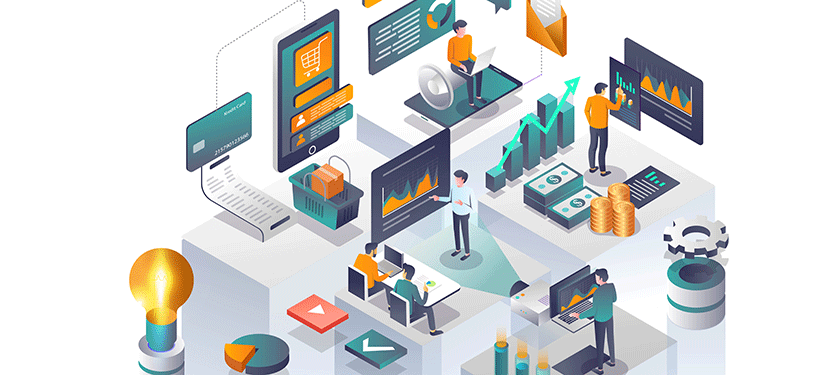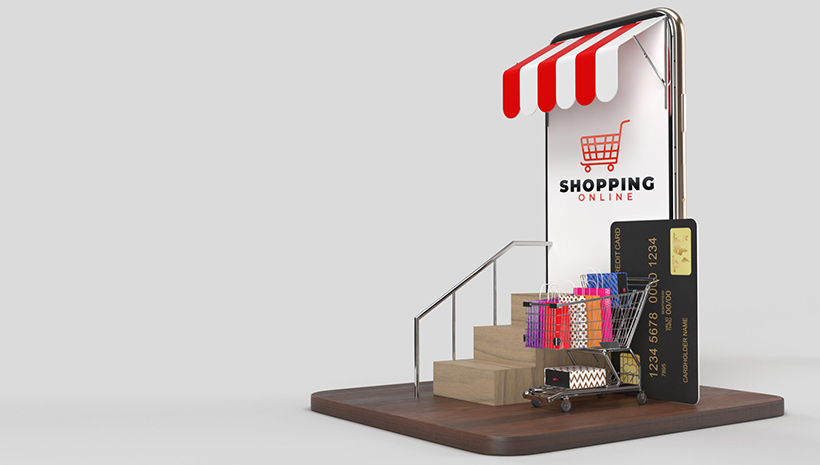Retail Network Management: Better CX, Safer Business Ops
Park Place Professional Services

How Digital Technology Has Reshaped the Future of Retail
The retail business is changing, and fast. As is the case with many other industries, retail is all in on the customer first, on-demand economy. Internet, social media, and mobility have come together to create a set of customer expectations unprecedented in the past. Consumers have serious demands, and they’ve also got infinite information available in their pockets to help them on their purchasing journeys.
The customer experience has become the number one priority as innovative technologies have introduced significant digital disruption. The legacy retail model no longer applies, and as cutting-edge technologies come into the fold, a new view of the retail industry is taking shape.
A hybrid mix of humans and machines comprise the new operational model for retail organizations, supported by an array of IT technologies and automation functions that support human workers in their daily pursuits, whether it’s delivering quality customer service, managing inventory, or warehouse picking. Enhanced productivity is the goal.
It’s not just online shopping that’s applying all the innovation; brick and mortar stores are heavily invested too. In-person shopping is still the only way to see and feel products in person, after all. As a result, more customers are growing accustomed to using smart devices during the in-person shopping experience as retailers hone in on uncovering information about their customers, including product preferences and shopping behaviors.
- Most retailers are well advanced with their digital transformation programs, with the most mature areas being finance, sales, customer service, and frontline retail operations, respectively.
- Many operate a hybrid online/physical model, relying on techniques like “buy online purchase in-store.” Nearly two thirds (64.2%) of retailers believe that online and physical retailing are moving closer together.
- Most retailers have embraced the concept of enhancing the customer experience. 79.1% of retailers are using social media and digital marketing, and 68% offer smartphone apps to enhance the customer experience.
Digital retail will continue to boom, while physical retailers must figure out how to take advantage of the nuances of the in-person shopping experience. In either case, it requires an investment in new and improved retail network management technologies, including wireless and data analytics tools.
Success in Retail Depends on Strong, Dynamic, and Monitored Networks
Today, it’s not only point of sale systems that are network connected in the case of physical stores. In grocery stores, for instance, it’s common to find network connected equipment that allows remote monitoring of refrigerator and freezer units. Or, for example, if you were to visit the local deli and ask for a pound of turkey, the cashier might enter a SKU number, which travels from the inventory into the data center over the network, and then sends back the new prices for that particular day. There are also examples such as Home Depot where you can look up the items you’re in search of from your phone while shopping to find out the aisle and bay number. These are only a handful of digital conveniences being offered by retailers with increasing frequency.

As brick-and-mortar retailers continue to integrate technology into the everyday shopping experience, it’s also necessary to invest more in the network, wireless especially. Most stores operate different wireless networks served by the same equipment (one secure network for the retailer itself, plus customer WiFi). Consumers today visit stores expecting WiFi, which introduces myriad connected devices potentially posing risks to retailers and their customers. Not to mention, wireless site survey services may be necessary to achieve the right wireless network coverage at your location. Tracking and communicating with customers in general is turning into the cornerstone of well-rounded digital/mobile retail strategy. All of this, of course, needs to be monitored by a capable retail network management software as retailers continue to rely on the network extensively.
By using comprehensive, quality network management services or network management software designed to meet the needs of a retail environment, brick and mortar retailers can exceed the expectations of today’s connected shopper, augment internal operations of the organization, and expand on what’s become a powerful business asset in today’s digital society.
3 Network Monitoring Best Practices for Retailers
The retail industry has some unique factors for consideration when it comes to achieving network visibility. Here are three best practices retailers should keep in mind when it comes to effective network monitoring.
1. Keep a Close Eye on Configuration Control
Configuration control is key for network monitoring to make sure that everything is configured as per policy. With information security so intertwined with every aspect of business, it’s imperative to make certain you’re separating your secure network from your public network. Crossing of boundaries can result in breaches and potentially irreparable damages as a result.
2. Monitor All Network Devices at the Retail Level
It’s critically important to monitor all network devices at the store level. Retailers can’t get away with monitoring only a subset of the ports on these devices, for example, because everything is considered critical to the operation of the store, whether we’re talking about connected cash registers or temperature alarms. Every port on every network device absolutely must be monitored.
3. Ensure Point to Point Links Between Stores Are Up, Available, and Performing Well
If a consumer is trying to check out and a card reader won’t go through or they’re unable to get a price for a product, some may get frustrated and forego the product, or even worse, forfeit the transaction, resulting in lost revenue. Links carry traffic containing information on inventory, pricing, barcode changes, and a slew of other highly dynamic store functions. When one of those links goes down, not only should you know about it in real time, but you should have a backup, and a way to get back on the primary link as fast as possible.



